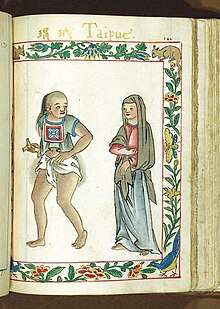Pangasinan people
| Total population | |
|---|---|
| 2,012,496 (2020 census)[1] (1.9% of the Philippine population) | |
| Regions with significant populations | |
(Pangasinan, Tarlac, La Union, Benguet, Nueva Ecija, Zambales, Nueva Vizcaya, Metro Manila) Worldwide | |
| Languages | |
| Pangasinan, Ilocano, Tagalog, English | |
| Religion | |
| Predominantly Roman Catholics, some are Protestants, Iglesia ni Cristo, Muslim, Buddhist and Animist | |
| Related ethnic groups | |
| Filipinos (Kapampangan, Sambal, Ilocano, Ibanag, Igorot, Ivatan, other Filipino ethnic groups) other Austronesian peoples |
The Pangasinan people (Pangasinan: Totoon Pangasinan), also known as Pangasinense, are an ethnolinguistic group native to the Philippines. Numbering 1,823,865 in 2010, they are the tenth largest ethnolinguistic group in the country.[2] They live mainly in their native province of Pangasinan and the adjacent provinces of La Union and Tarlac, as well as Benguet, Nueva Ecija, Zambales, and Nueva Vizcaya. Smaller groups are found elsewhere in the Philippines and worldwide in the Filipino diaspora.
Etymology
The name Pangasinan means 'land of salt' or 'place of salt-making'. It is derived from asin, the word for 'salt' in Pangasinan.[citation needed] The Pangasinan people are referred as Pangasinense. The term Pangasinan can refer to the indigenous speakers of the Pangasinan language or people of Pangasinan heritage.
Demographics


The estimated population of the Pangasinan people in the province of Pangasinan is 2.5 million. The Pangasinan people are also living in the neighboring provinces of Tarlac and La Union (which used to be parts of Pangasinan Province), Benguet, Nueva Ecija, Zambales, and Nueva Vizcaya; as well as in Pangasinan communities in other parts of the Philippines and overseas.[citation needed]
Indigenous religion
|
Main article: List of Philippine mythological figures |
Prior to Spanish colonization, the Pangasinan people believed in a pantheon of unique deities (gods and goddesses).[3]
Immortals
- Ama: the supreme deity, ruler of others, and the creator of mankind; sees everything through his aerial abode; father of Agueo and Bulan[4] also referred as Ama-Gaolay[3]
- Agueo: the morose and taciturn sun god who is obedient to his father, Ama; lives in a palace of light[4]
- Bulan: the merry and mischievous moon god, whose dim palace was the source of the perpetual light which became the stars; guides the ways of thieves[4]
Mortals
- Urduja: a warrior princess who headed a supreme fleet[5]
Notable individuals
Urduja was a legendary woman warrior who is regarded as a heroine in Pangasinan. Malong and Palaris fought for independence from Spanish rule. Other prominent people of Pangasinan descent include Fidel Ramos (born in Lingayen, he served in the Cabinet of President Corazón Aquino, first as chief-of-staff of the Armed Forces of the Philippines, and later on, as Secretary of National Defense from 1986 to 1991 before becoming the Philippine's 12th president), Tania Dawson whose mother hails from Santa Maria, Pangasinan, lawmaker Jose de Venecia, Jr., who was born in Dagupan City, Pangasinan; and actor and National Artist Fernando Poe, Jr., whose father was from San Carlos City, Pangasinan. Other notable Pangasinenses are Victorio C. Edades, Angela Perez Baraquio, Ambrosio Padilla, Cheryl Cosim (reporter), Marc Pingris, Leo Soriano, and Ric Segreto. Notable Pangasinense actresses and actors include Donita Rose, Marlou Aquino, Lolita Rodriguez, Barbara Perez, Gloria Romero, Carmen Rosales, Nova Villa, Jhong Hilario, and Liza Soberano.
Text is available under the CC BY-SA 4.0 license; additional terms may apply.
Images, videos and audio are available under their respective licenses.
